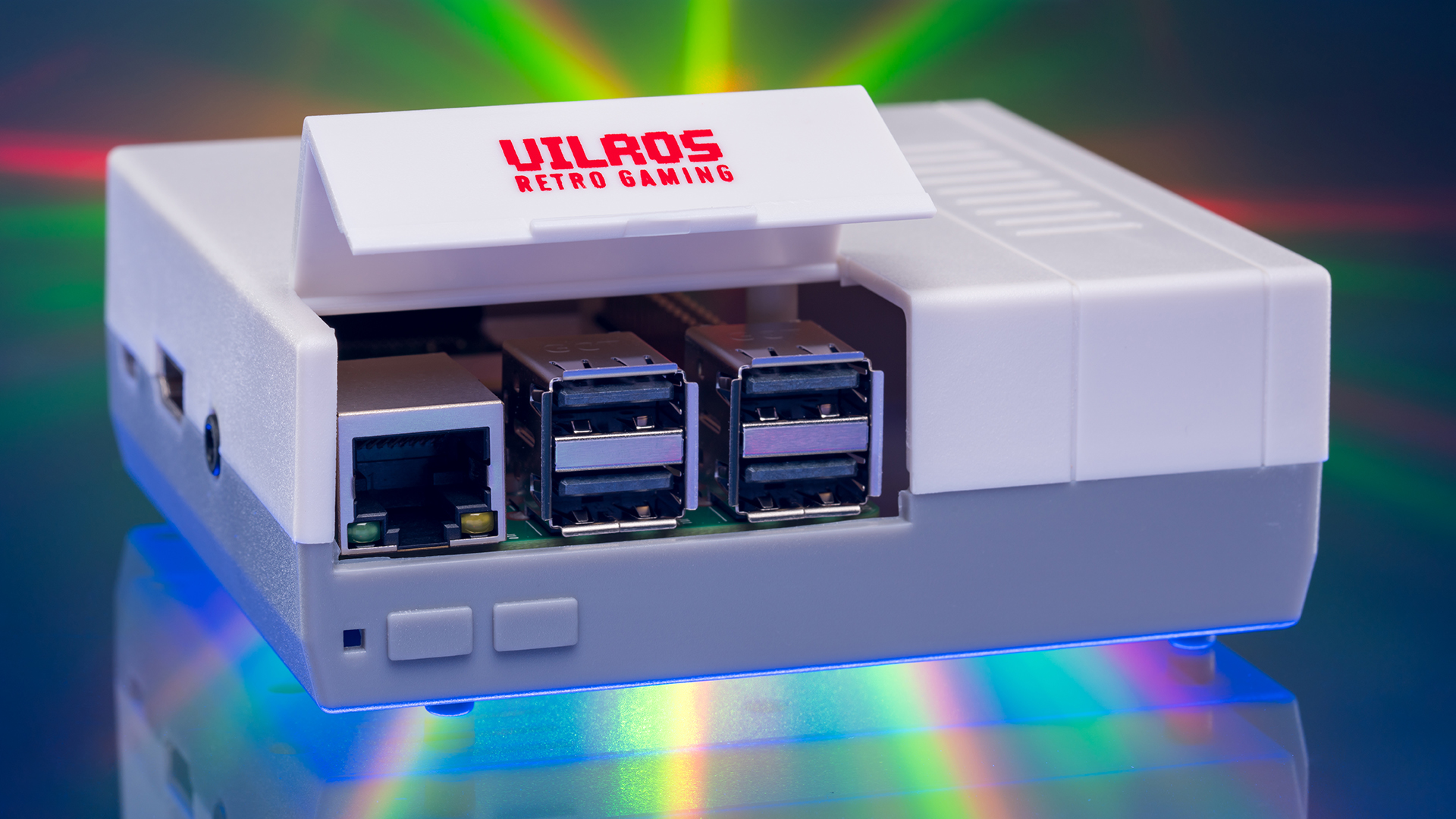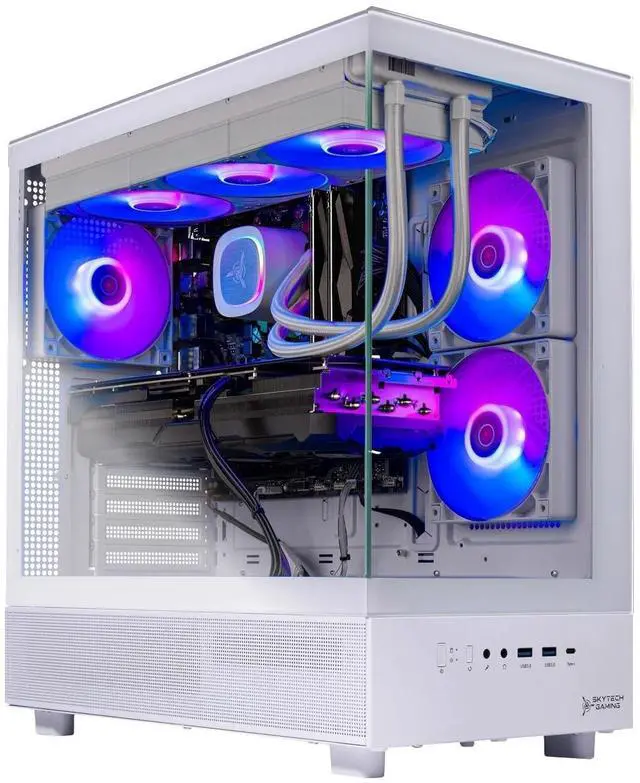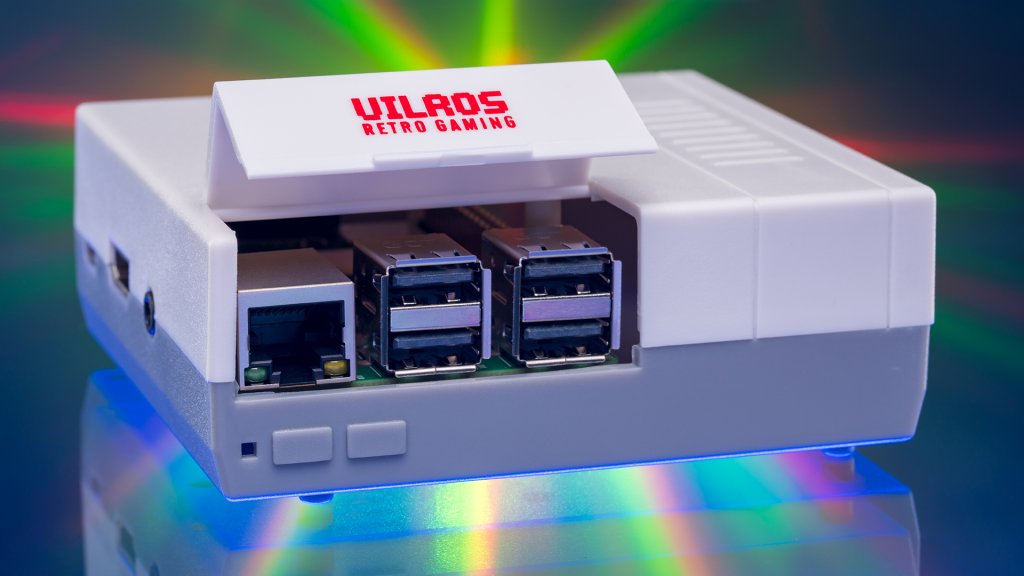
In the chilly late-autumn Ohio mornings of 2016, you would be likely to spot me posted up in front of one of many stores stocking the season’s most coveted item, huddled amidst a shivering mass of gamers, nostalgia freaks, uninterested parents, and — predominantly — resellers. We stood there shivering, united under one cause: getting our hands on Nintendo’s highly sought-after, highly underproduced NES Classic Edition (well, some people were there for Hatchimals too, but that doesn’t make for as good of a story). Each time, a well-meaning store associate would crush our dreams by informing us that they handed out tickets for Nintendo’s elusive mini console in the wee hours of the morning, before any of us poor saps even arrived. I would participate in this ritual at least once a week for over a month, growing more frustrated and frostbitten as time wore on. I was giving up hope of ever getting my hands on a new way to play some of my favorite retro games. Then, one day while browsing forums in search of tips on where and when to expect the next shipment of Classics, I encountered multiple people across the web saying “Why don’t you just build a RetroPie console?”
For the uninitiated, RetroPie is a software package focused on game emulation and designed for use with a Raspberry Pi. Prior to my futile NES Classic odyssey, I was familiar with Raspberry Pi as a development board for makers and CompSci wizkids, two things that I am decidedly not. But from the way online chatter made it sound, the average gamer doesn’t need the coding skills of a game developer to set up their own mini RetroPie console with a Raspberry Pi — or any coding skills at all, for that matter.
It sounds like I’m building up to explain how I set to work on putting together my own RetroPie console. Well, that was the plan, until I stumbled upon an NES Classic out of sheer dumb luck one day and pumped the brakes on my machinations for making an all-in-one retro game solution. But over the past few years, delving into Raspberry Pi for a simple emulation solution has remained on my mind. After taking some first steps with a Raspberry Pi of my own last year, I dove into the world of Raspberry Pi gaming with Vilros’ excellent Raspberry Pi retro gaming kits. After testing out two of their options — a kit with two SNES-inspired USB gamepads and a kit with five USB controllers modeled after the iconic gamepads of the NES, SNES, Nintendo 64, Sega Genesis, and PlayStation 2 — I’m convinced that they’re a must-have gadget for retro gaming enthusiasts.
A Complete Retro Gaming Solution
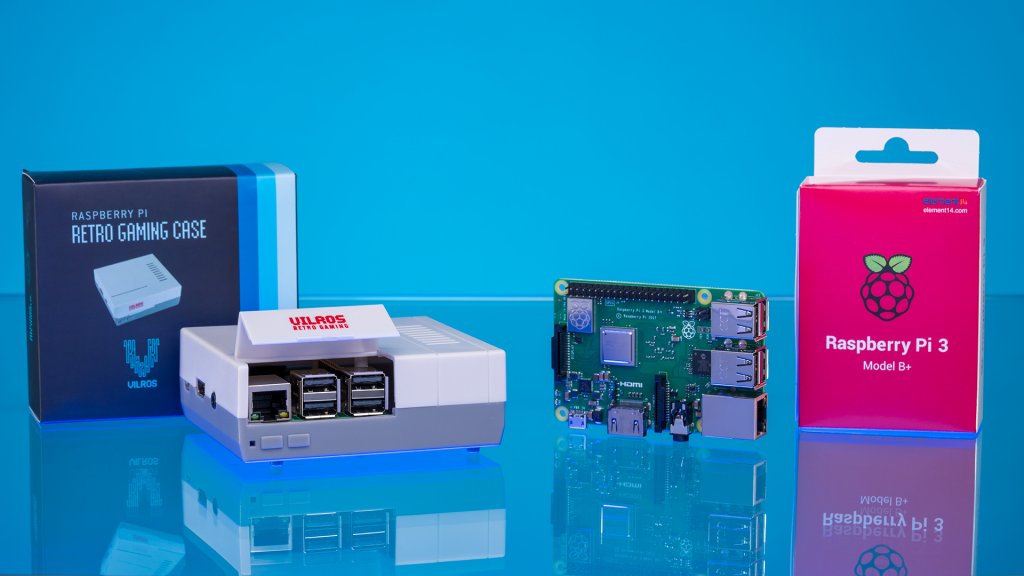
It’s not hard to see where the popularity of RetroPie consoles, or mini consoles in general, came from. Sure, a PC may do an admirable job of emulating classic games, but RetroPie is meant to serve as a more convenient plug-and-play alternative for enjoying your retro collection on the TV. It’s easy to plug in and play, and it’s super portable to boot. It’s all about the convenience of packing a lot of gaming fun into a small package. Better yet, RetroPie already includes emulators for many of the most popular retro consoles (NES, SNES, Sega Genesis, PlayStation 1, Nintendo 64, etc), niche systems (Neo Geo, Atari Lynx, Wonderswan), and arcade games through the MAME emulator. Check out the RetroPie website for a full list of supported systems.
Included with both Vilros kits are a Raspberry Pi 3 Model B+, a nifty NES-inspired case for housing the Pi, a 32GB Samsung EVO+ micro SD card preloaded with RetroPie, a flash drive with folders already properly organized and ready for loading ROMs, two heatsinks and thermal paste, an HDMI cable, and a micro USB power cable; the only difference between the two kits are the aforementioned controllers contained within.
Emulation and RetroPie
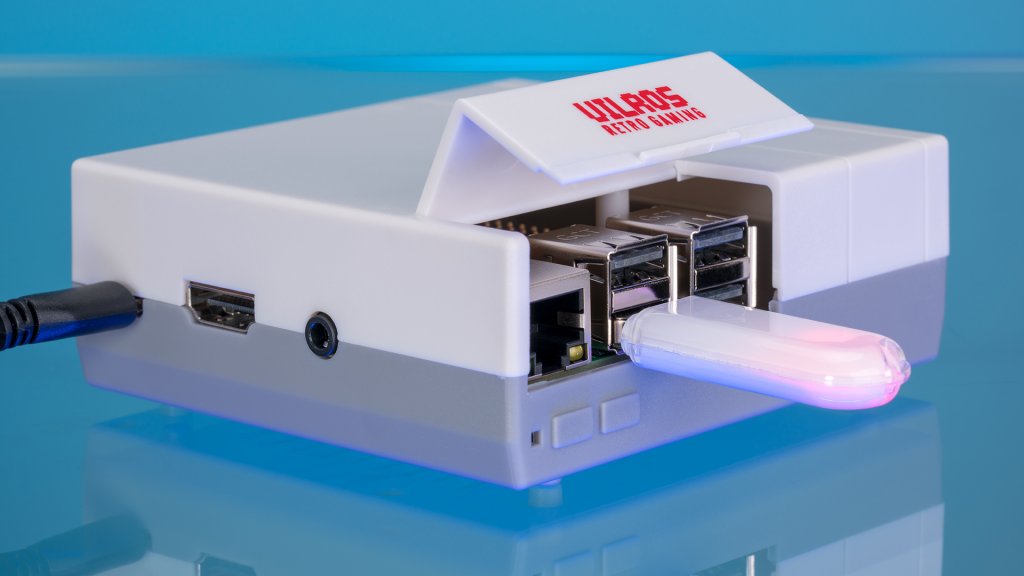
If you’re interested in gaming on the Raspberry Pi but new to the whole emulation scene, here’s a bit of a primer. An emulator is hardware or software that mimics, or emulates another hardware system, thereby enabling it to run software and/or use peripherals from the other system. For instance, in the context of this article, a Super Nintendo emulator is software that imitates an actual Super Nintendo console, thereby permitting the Raspberry Pi – the hardware running the emulator – to run Super Nintendo games.
So, how do you actually get your old games on the Raspberry Pi? That’s where ROMs come in. ROMs are the digital copies of games ripped from the Read-Only Memory (hence, ROM) chips inside of game cartridges. Nowadays, the term ROM is often used as a catchall term to refer to any retro game digital copies, even when ripped from optical media like a PlayStation disc (though the somewhat more accurate term “ISO” is always commonly used in reference to disk-based game copies). As for how you get those ROMs…well, see the next section for that quandary.
Once you have some ROMS, there are a few ways to get them onto the Raspberry Pi, the easiest being via USB flash drive or network transfer. Vilros’ kits include a USB flash drive already formatted and ready for ROMs; all you need to do is plug the flash drive into your computer and place the ROMs in their appropriate folders (i.e. NES game ROMs into the “NES” folder), and then plug the drive into the Pi. Network file transfer is arguably even easier; after using the USB transfer method once, I opted to load my ROMs over Wi-Fi for the rest of my time with Vilros’ kits.
On the Ethics and Legality of Emulation
Before proceeding, I want to emphasize that this article in no way condones piracy. Emulation has been found acceptable under U.S. legal precedent, but downloading copyrighted ROMs off the internet is illegal, whether you own an original copy or not. Making digital copies of games you own is a murkier matter. There’s no real legal precedent set for the legality of ripping ROMs yourself from games in your collection, though many an argument has been made that this is the most ethical way of playing classic games on an emulator. In any case, I won’t make any mention of specific games I played in the course of my testing, so as to not wade too deep into muddy waters. All I’ll say is that it’s in every gamer’s best interest, if they want to help maintain a healthy gaming industry, to support a game’s official release with their purchase.
Emulation presents a number of benefits for preserving gaming history and personal game collections. For one thing, physical media and the devices used to play them all have a shelf life — sad as it is to think, one day your trusty old consoles will no longer work. As for games themselves, many collectors are finding their games reduced to various states of unusability from such ravages as disc rot and dead cartridge save batteries. As our oldest games lurch ever closer to their expiration, the conversation over the ethics of emulation is sure to heat up even more. For a more comprehensive look at emulation and its legal history, check out this excellent article from my colleagues at GameCrate.
Putting It All Together
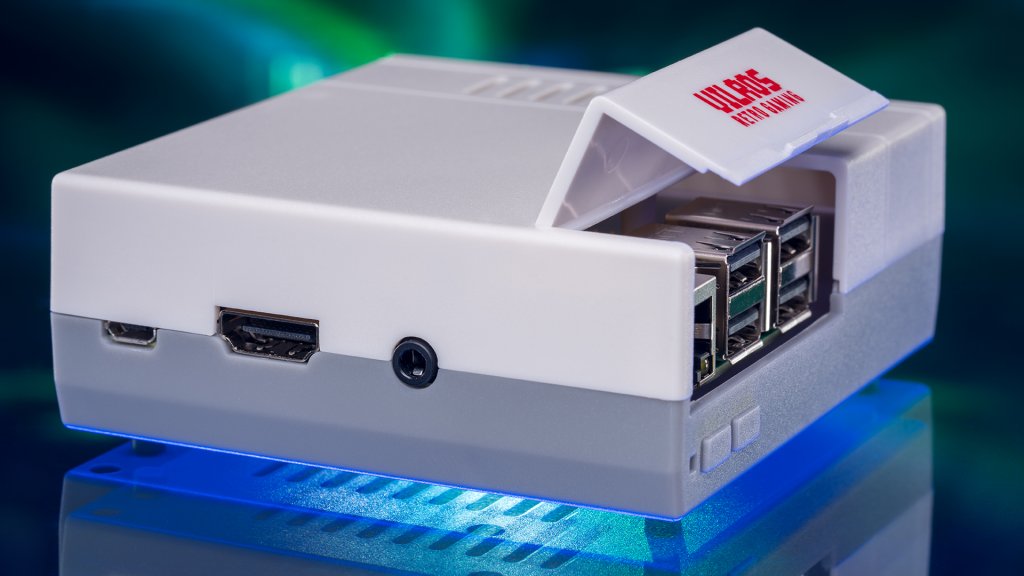
Vilros includes detailed setup instructions with their kits. Not that I ended up needing them; I was rather taken aback by how easy it was to put everything together. The trickiest part was installing the heatsink, and that was only a matter of determining the right amount of thermal paste to apply — pretty trivial. There’s barely any assembly to speak of: the case is divided into only two separate pieces. All you need to do is align the Pi with holes on the inside of the case and use the included screws to connect the two halves of the case together.
The case that houses the Raspberry Pi wears its design inspiration — the original NES — on its sleeve and includes a few neat touches. For one, the “cartridge slot” opens up to reveal the Raspberry Pi’s Ethernet and USB ports, and the power indicator lines up perfectly with its location on the NES. It’s not a hyper-detailed replica of the original thing, but by emulating the appearance of arguably the most iconic console ever, it gets its message across: this is a portal to gaming history.
As for the software side of the equation, there’s barely any setup to speak of. With RetroPie already loaded on the included micro SD card, all you have to do in plug in the card and choose to install RetroPie when the machine boots up. When RetroPie finishes installing, you are prompted to configure your controller. An intuitive button-mapping menu walks you through the process, allowing you to set your buttons as whatever input you want. You’ll also map a hotkey button that can be used in tandem with another button to perform tasks like launching an in-game emulator options menu.
The Ingredients of a Delicious RetroPie Console

RetroPie comprises multiple pieces of software for running games, chiefly among them Emulation Station and RetroArch. Emulation Station serves as the main front end for a RetroPie console. It sports an intuitive interface, custom themes, and a metadata scraper that will download game artwork and information for the games in your library. Emulation Station is designed for easy navigation with a controller: you can scroll through menus with a directional pad, confirm options with the A button, go back a screen with the B button — it’s a lot like navigating the menu on a modern console.
RetroArch serves as a front end for what is known as the libretro API. These software work together to take an emulator and load it as a “core,” libretro’s term for a program that has been ported for use with their API. RetroArch serves as a unifying system between the assorted libretro cores, handling the controller inputs and graphics and audio output, while the core focuses on emulating the hardware. What this means for RetroPie users is that RetroArch allows for a unified options menu across libretro-supported emulators. Better yet, RetroPie makes it so that your Emulation Station controller configuration automatically maps the same way in RetroArch. It’s this level of software convenience that makes a RetroPie console such an enticing device for retro enthusiasts.
Authentic Retro Gaming Starts with the Controller

As someone who owns a lot of old consoles, the most impressive part of Vilros’ retro gaming kits was just how great the controllers felt. I’ve used so many outright awful third-party controllers over the years that I swore off using them. That also goes for the glut of retro-styled controllers littering the market these days — most NES controller knockoffs I’ve used have been worth about as much as a crusty old copy of Fester’s Quest. Vilros’ controllers, on the other hand, are a notch above other imitation gamepads I’ve used. As someone who has played hundreds of hours with the original controllers represented here, I can attest to them nailing the look and feel of each. (If you’re a massive nerd like myself, you could be pedantic and say that they messed up the authenticity on their SNES pad, since it uses the color scheme of the Super Famicom/European SNES controllers and mixes it up with the concave X and Y buttons of the American controller, but I’ll cut them some slack since I actually prefer it that way).
At the risk of gaming blasphemy, I actually preferred some aspects of the Vilros replicas to the genuine article; to me, the d-pad on the SNES and N64 controllers felt better than those on the original controllers, which often feel too squishy for my liking. The only controller I wasn’t altogether thrilled with was the PS2 pad, but that was only because the d-pad didn’t feel as good as I remembered it feeling on an actual DualShock 2. I didn’t have an actual DualShock on hand to compare it with though, so that may just be nostalgia talking.
Vilros’ gamepads are all wired controllers, just as they were in their original form, which is mainly notable just because most modern controllers are not. While I still use a wired controller for my PC since I sit right next to it while I play, it takes some getting used to playing with a wired pad when I’m playing games from my couch. Lucky, then, that the cords on the Vilros gamepads measure in at an adequate length of five feet. While that’s shorter than the cords of some of the original controllers, it’s at least longer than what certain aforementioned “classic” console controllers used. If you find that five feet doesn’t give you enough room, I can verify through my testing that a USB extension cable should solve your issues without introducing noticeable input lag. Or, if you want to be hardcore nostalgic, you can always just sit on the floor in front of the TV and play (Vilros doesn’t include any dolls or action figures to strew about the floor, so the effect may not be perfect, I’m afraid).
Great Gaming Performance in a Small Package
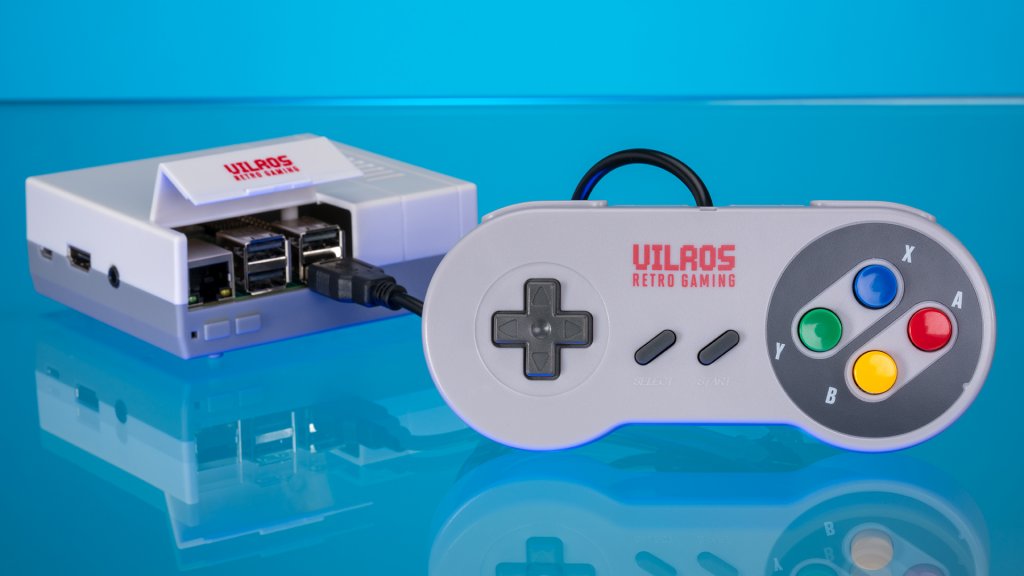
Even though Vilros’ five-controller kit includes a PS2-inspired gamepad, the Raspberry Pi 3 Model B+ doesn’t actually support PS2 emulation. PS1, on the other hand, works great in most cases. I played through some of my favorite games in my collection with minor and rare performance hiccups. I only ran into one game that refused to work and crashed right after the title screen, but after a quick look around the web about the issue, I found a workaround that got it up and running properly.
What doesn’t fare as well is emulation of the PS1’s contemporary, the Nintendo 64. Many of the games I tested exhibited such maladies as slowdown, audio stuttering, screen flashing, or just outright crashing. That said, the games that were mostly stable felt great with the Vilros N64 controller in my hands. The N64 pad’s revolutionary analog stick feels much different than those of modern controllers, which makes revisiting its game library with, say, an Xbox controller never feel quite right.
Where the Raspberry Pi really shines is in emulating consoles that primarily trafficked in 2D graphics, from SNES, Genesis, and NES to handhelds like the Game Boy hardware family. Everything I played from these consoles, from NES to Game Boy Advance, ran beautifully on the RetroPie console. The only time I ran into any issues emulating these systems was when I would go crazy by adding multiple graphical filters through RetroArch’s options. That ended up being overkill for the poor Raspberry Pi, but sticking to one filter never caused me an issue. With how easy it was to run my favorite games with neat customization options, it’s no wonder why a RetroPie console has become a must-have item for retro gamers.
A Tasty Piece of Nostalgia

As someone who owns all the original consoles represented by the controllers in these kits (and then some), I was overwhelmed by just how well Vilros pulled off a complete RetroPie console that conveys the feeling of playing those classic systems. The Raspberry Pi was up to the task of emulating most of my favorite games of yesteryear, and Vilros’ controller hardware was just as solid. Vilros’ Raspberry Pi retro gaming kits are a great solution for anyone who wants to keep their retro game collection in one cool, convenient package — no programming knowledge required. And best of all, you don’t need to stand out in the cold for hours to get one.
Featured in this article:
Vilros Raspberry Pi 3 Model B+ Retro Gaming Kit with 2 USB Gamepads
Vilros Raspberry Pi 3 Model B+ Retro Gaming Kit with 5 USB Gamepads
Note, all prices and products are accurate at the time of article publication, although some may have changed or are no longer available.

